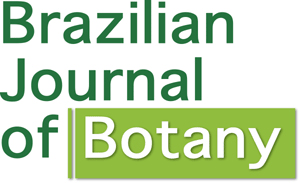Variations in the leaf structure of Mikania glomerata Spreng. were investigated in distinct light regimes (high light, half-shade; shade; 100%, 26,4% and 13,8% of light intensity, respectively) associated to different vegetation types in the Araucaria Forest, Municipality of Castro, PR (25°50'64"S and 49°43'69"W). This study was designed to orient medicinal-plant producers to choose the best light condition for planting and to evaluate the potential use of medicinal species as an alternative to restore and to manage the understorey. After two years of the experiment, thirty seven leaves were collected from each treatment and the following parameters were analyzed: fresh and dry leaf mass, water content, leaf area, specific leaf area, stomata and trichome densities, lamina and petiole thickness and chlorophyll concentration. The higher mean values of fresh and dry mass, water content, leaf area and specific leaf area occurred in the leaves of the shade treatment, while the stomata and trichome densities, and lamina thickness presented higher values in leaves of the open-field treatment. The principal component analysis showed similarities between the leaves of the half-shade and high light treatments, suggesting that low light conditions are sufficient to stimulate leaf morphology responses. The higher mean values of leaf area and dry mass suggest a higher productivity on shade treatment. However, studies concerning growth rates, seasonal responses, and distinct nutrient conditions are necessary to complement information about more efficient cultivation methods.
guaco; leaf plasticity; light intensity; medicinal plants







